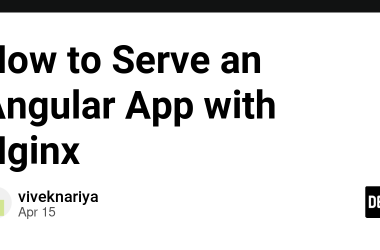With iOS 26, Apple introduces PermissionKit, a powerful framework designed to enhance child safety in communication apps. This framework provides a seamless way for children to request permission from their parents before communicating with unknown contacts, directly through Messages.
Core Requirements
Prerequisites
- Family Sharing: Users must be part of a Family Sharing group
- Communication Limits: Parents must enable Communication Limits for the child
- Age Detection: Apps need existing systems to determine if users are children
- Fallback Handling: API returns default responses when prerequisites aren’t met
When to Use PermissionKit
- Apps with communication functionality (messaging, calling, video chat)
- Multi-generational apps serving users of all ages
- Apps requiring parental oversight for child interactions
- Platforms wanting consistent permission experiences across Apple devices
Implementation Strategy
1. Age Range Detection
Before implementing PermissionKit, establish user age ranges using either:
- Existing account systems with age verification
- Apple’s new Declared Age Range API for apps without age systems
Critical: Only use PermissionKit APIs when confirmed the user is a child.
2. UI Adaptation for Children
Hide potentially sensitive content from unknown senders:
- Message previews
- Profile pictures
- User-generated content
- Any information not suitable for children
import PermissionKit
let knownHandles = await CommunicationLimits.current.knownHandles(in: conversation.participants)
if knownHandles.isSuperset(of: conversation.participants) {
// Show content
} else {
// Hide content
}
Key Points:
-
knownHandles(in:)performs optimized system lookups - Supplement with existing database information
- Only reveal content when all handles are known
- Default to hiding content for child safety
3. Creating Permission Questions
Basic Question Structure
import PermissionKit
var question = PermissionQuestion(handles: [
CommunicationHandle(value: "dragonslayer42", kind: .custom),
CommunicationHandle(value: "progamer67", kind: .custom)
])
Enhanced Questions with Metadata
import PermissionKit
let people = [
PersonInformation(
handle: CommunicationHandle(value: "dragonslayer42", kind: .custom),
nameComponents: nameComponents,
avatarImage: profilePic
),
PersonInformation(
handle: CommunicationHandle(value: "progamer67", kind: .custom)
)
]
var topic = CommunicationTopic(personInformation: people)
topic.actions = [.message]
var question = PermissionQuestion(communicationTopic: topic)
Best Practices:
- Include maximum metadata possible (names, images, handles)
- Set appropriate actions (message, call, video)
- Metadata appears in parental review interface
- More context leads to better parental decisions
4. Presenting Permission Requests
SwiftUI Implementation
import PermissionKit
import SwiftUI
struct ContentView: View {
let question: PermissionQuestion<CommunicationTopic>
var body: some View {
// ...
CommunicationLimitsButton(question: question) {
Label("Ask Permission", systemImage: "paperplane")
}
}
}
UIKit Implementation
import PermissionKit
import UIKit
try await CommunicationLimits.current.ask(question, in: viewController)
AppKit Implementation
import PermissionKit
import AppKit
try await CommunicationLimits.current.ask(question, in: window)
User Experience Flow:
- Child taps permission button
- System presents confirmation alert
- Options include “Ask via Messages” or “Get approval in-person”
- Messages compose window opens with pre-filled recipients
- Child can add context or names before sending
5. Handling Parental Responses
import PermissionKit
import SwiftUI
struct MessagingView: View {
@State var isShowingResponseAlert = false
var body: some View {
List {
// ...
}
.task {
let updates = CommunicationLimits.current.updates
for await update in updates {
// Received a response!
self.isShowingResponseAlert = true
}
}
}
}
Response Handling Strategy:
- App launches in background when parents respond
- Obtain
AsyncSequencefrom CommunicationLimits singleton - Process responses on background tasks
- Update UI and local caches immediately
- Sync permission changes to servers
- Show notifications to inform children of decisions
Parental Experience
Review Process
- Parents receive permission requests in Messages
- Quick decline option available directly from message bubble
- Detailed review shows complete context and metadata
- Clear approve/decline interface with reasoning options
Decision Factors
- Child’s relationship to unknown contact
- Provided metadata (names, images, context)
- Communication type (messaging, calling, video)
- Historical permission patterns
Advanced Considerations
Cross-Platform Consistency
- Use PermissionKit as foundation for web-based experiences
- Sync permission data to servers for platform consistency
- Maintain permission states across all user touchpoints
Integration with Family Safety APIs
Sensitive Content Analysis API
- Detects and blocks inappropriate content in video calls
- Complements PermissionKit for comprehensive protection
- Essential for live streaming and video communication features
Screen Time Framework
- Provides parental supervision tools for web usage
- Integrates with PermissionKit permission patterns
- Enables comprehensive time and content management
Family Controls Framework
- Allows apps to implement custom parental controls
- Works alongside PermissionKit for complete safety solutions
- Enables app-specific restriction and monitoring features
Implementation Checklist
Phase 1: Foundation
- [ ] Implement age range detection system
- [ ] Audit UI for child-appropriate content filtering
- [ ] Test Family Sharing group requirements
- [ ] Verify Communication Limits dependencies
Phase 2: Core Integration
- [ ] Implement
knownHandlescontent filtering - [ ] Create permission question infrastructure
- [ ] Add platform-specific UI components (SwiftUI/UIKit/AppKit)
- [ ] Test permission request flow end-to-end
Phase 3: Response Handling
- [ ] Implement background response processing
- [ ] Add AsyncSequence monitoring for permission updates
- [ ] Create UI update mechanisms for permission changes
- [ ] Test notification delivery and app state management
Phase 4: Enhancement
- [ ] Add comprehensive metadata to permission requests
- [ ] Implement server-side permission synchronization
- [ ] Integrate with additional Family Safety APIs
- [ ] Add analytics for permission request patterns
Performance Considerations
Optimization Strategies
- Cache known handles to reduce API calls
- Implement efficient metadata loading for contacts
- Use background queues for permission response processing
- Minimize UI blocking during permission checks
Memory Management
- Properly manage AsyncSequence subscriptions
- Release permission question resources after use
- Cache contact metadata efficiently
- Handle app backgrounding during permission flows
Conclusion
PermissionKit represents a significant advancement in child safety for iOS apps. By providing a standardized, Messages-integrated permission system, it removes technical barriers while ensuring consistent user experiences across the platform.






